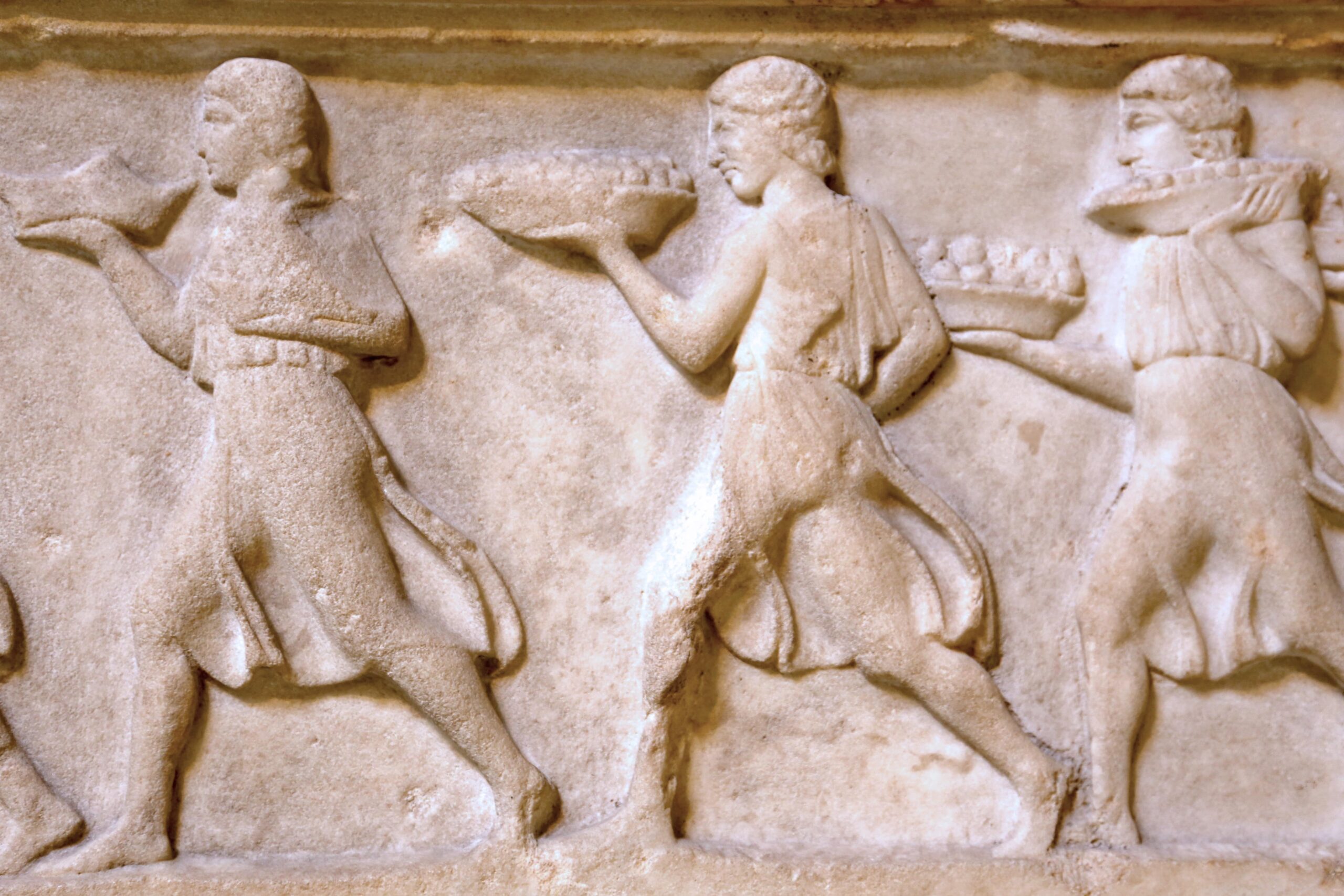Body ideals change but your worth never does
Throughout history, the ‘ideal body shape’ for women has been constantly and abruptly changing, with new trends around every corner.
Historically, women have been objectified, scrutinised, sexualised, and crucified for what they look like.
Society has continued to construct new ideals to strive for, ideals which, often, cannot even be achieved naturally. Interestingly, these socially constructed standards have been vastly different and polarising over time, meaning the ideal body type has never stayed the same for very long.
This article will take a brief dive into the history books to explore what the ideal body shape for women has looked like throughout the years, and what this looks like today.
2400-2200BC: The Paleolithic era
‘The Venus of Willendorf’ was one of the first pieces of art ever discovered, and a primitive symbol of the idealised woman of the time1. “Voluptuous and well-nourished” was the ideal, with this sculpture sporting large breasts, an emphasised stomach, and wide hips.
1100BC: Ancient Egypt
The Ancient Egyptians viewed a woman as being fertile and, therefore, more desirable, if she was slender and tall, with narrow shoulders and a high waist.
500-300BC: Ancient Greece
Ancient Greek philosopher Plato coined the ‘golden ratio’, a term used to this day for judging how beautiful a face was based on its symmetry. Plump, full bodies with ample bosoms, big backs, and thick thighs and arms were seen as the ultimate symbol of virility in Ancient Greece.
1400-1700AD: Italian Renaissance period
Famous Renaissance artists such as Michelangelo, Botticelli and Raphael would paint their ideas of ‘beautiful women’ at the time, whose bodies had rounded features and soft faces.
The Renaissance represented a transition of sorts, from women being seen less as objects of fertility, and more as objects of beauty and lust.
1837-1901: Victorian/Edwardian England
Women of the time opted for tight corsets and wide, bell-shaped skirts to emphasise their figures.
Charles Dana Gibson illustrated the ‘Gibson Girl’ of the 1890s, who had a cinched-in waist and a large bust; but was more on the slimmer side to previous eras2. This represented the beauty standards of the time, as women would try their hardest to mirror the curvy figure of the Gibson Girl.
1920s: Twenties era boyish figure
The twenties were, in a sense, an act of rebellion against the more feminine figure sought after in previous years. Women wanted slim, small frames with no curves, styling short hair and shorter hemlines.
Due to the invention of bathroom scales in 1917 and the rise of department stores with full-length mirrors, an obsession over women’s body types was ignited and fueled even further.
1930-1950s: Hollywood era hourglass
During Great Depression that followed the twenties, people couldn’t afford to worry as much about their figure. However, after this period ended, the hourglass figure made its peak, with bigger breasts, wide hips and a slim waist becoming popular once again.
1960-1970s: Swinging Sixties
Thin was officially back in. Women favoured petite, delicate figures and long, slender legs.
1980s: Eighties era fitness model body
During the eighties, a new fitness rage was sweeping the globe. The goal was tall, tanned and thin, but slightly athletic looking, with toned bodies, smaller waists and narrower hips popular among women.
This decade also saw a noticeable spike in anorexia, potentially due to the new infatuation with exercise regimes and workout videos. In fact, one publication even pronounced anorexia “the disease of the decade”.3
1990s: Heroin chic
A waifish, frail appearance was the look of the decade. The nineties showcased the thinnest female ideal in history, in comparison to most of the previous time periods leaning towards a fuller figure.
Women modelled themselves over skinny, androgynous, almost feeble-looking celebrities of the time, most of whom would’ve been using illicit drugs to maintain their thin frame.
2000-2010s: Plastic surgery revolution
The 21st century has seen a massive rise is cosmetic surgeries such as liposuction, Brazilian butt lifts, tummy tucks, face fillers, jawline fat-dissolving injections, breast implants and many others. The ‘ideal body shape’ for women has gradually become more and more artificially augmented, to the point where it is physically impossible to achieve through diet and exercise alone.
Plastic surgery and cosmetic procedures have increased in popularity at an almost exponential rate, with surgical procedures increasing by 54% and non-surgical procedures increasing 44% in 2021 when compared to previous years4.
2022: What next?
Beauty standards seem to have become more and more unrealistic, unattainable, and unrepresentative of the average woman as time has gone by. Over the years, the ‘ideal body type’ for women has changed and warped drastically, with new looks becoming the standard and replacing previous physical goals at a rapid rate.
No amount of squatting in the gym will get you a booty the size of Kim Kardashian’s…
(unless you have $30,000 to spend on a Brazilian butt lift!)
This just goes to show that perhaps we should be taking the ever-changing ‘ideal body shape’ with a pinch of salt, and that we shouldn’t be pressuring ourselves into attaining the unattainable.
It’s time to ditch the culturally ingrained standards and learn to love ourselves for who we are – normal, beautiful human beings.
If you’re interested in learning more about intuitive eating and rebuilding a healthy relationship with your body, we can help you out with our tailored 1:1 coaching. Drop us an email at [email protected] to get started on your journey into embodiment, empowerment and embracing eating!
EHL Team x
Robin Wileman, EHL Student Dietitian Intern
References
1 Weber, G., Lukeneder, A., Harzhauser, M., Mitteroeker, P., Wurm, L., Kainz, S., Haack, F., Antl-Weiser, W., & Kern, A. (2022). The microstructure and the origin of the Venus from Willendorf. Scientific Reports, 12(2926). [online] available at: https://doi.org/10.1038/s41598-022-06799-z
2 Yellis, K. A. (1969). Prosperity’s Child: Some Thoughts on the Flapper. American Quarterly, 21(1), 44–64. [online] available at: https://doi.org/10.2307/2710772
3 Tredinnick, D. (2002). The Exercise Book. Meanjin, 61(4), 58–64. [online] available at: https://search.informit.org/doi/abs/10.3316/informit.220099324306013
4 American Society for Aesthetic Plastic Surgery. (2021). Procedural Statistics 2020-2021. [online] available at: https://cdn.theaestheticsociety.org/media/statistics/2021-TheAestheticSocietyStatistics.pdf



